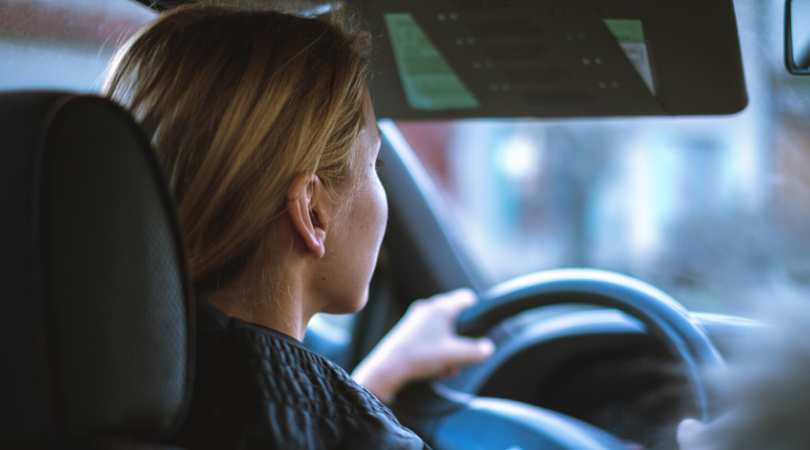 There’s nothing quite as simultaneously exciting and nerve-wracking as having a new teen driver in the family. The only thing I can think of to compare it to is that period when your baby becomes a toddler and you want to follow them around as they practice walking to ensure they don’t fall and crack their tiny skulls. Unfortunately, it’s pretty much impossible to follow your teen driver around and keep them safe. Although, with a freshly minted driver of my own in the house, I admit my husband and I did seriously consider it.
There’s nothing quite as simultaneously exciting and nerve-wracking as having a new teen driver in the family. The only thing I can think of to compare it to is that period when your baby becomes a toddler and you want to follow them around as they practice walking to ensure they don’t fall and crack their tiny skulls. Unfortunately, it’s pretty much impossible to follow your teen driver around and keep them safe. Although, with a freshly minted driver of my own in the house, I admit my husband and I did seriously consider it.
So, obviously I’ve been giving a lot of thought to how you keep a teen driver safe. So much of it is out of your control…what they do when they’re not with you in the passenger seat; other drivers; weather; mechanical issues. Ack. There’s only so much you can do, but, like with so much of life, you do what you can. My husband and I just bought our son a car for his 17th birthday, so because it was so much on my mind, I thought I’d share a few of the things we considered in the process with an eye toward safety.
Hours Behind the Wheel
First, the state of Tennessee requires teen drivers to have 50 hours of practice driving before they can take their road test. No one checks up on this, but obviously, the more your child drives with you in the car before you turn them loose on their own, the more opportunity you have to see where they need counsel and guidance and the more opportunity they will have to experience driving in a variety of weather and road conditions. Of course, you can outsource some portion of this to a driving school or if you’re lucky enough to go to a school that offers Drivers’ Ed as an elective, they can get experience that way. We took the old-fashioned route and taught him ourselves. Our son started learning in my giant minivan. Thankfully, before he was ready for his test, we traded my van for a smaller SUV that is much easier to teach and learn in. And he got a lot of time behind the wheel just driving around the city with me whenever we had a chance.
What’s the Rush?
We also didn’t feel a huge need to rush out and buy him a car the day he turned 16. I know for some families that makes sense and if your child has a job or your schedule means your kid needs to get themselves places, I totally understand. But when our son turned 16, we weren’t in a financial position to buy him a car and we had made the decision that we wanted him to know the value of having a car and set the expectation that he would need to save money of his own to put toward the purchase. We agreed to match whatever he saved and ultimately threw in a little extra once we found a car we all agreed on. This meant our son didn’t get a car until a month or so ago and was one of the last students in his class to get a car. (Of course, each time he pointed this out, I reminded him he would be fortunate to get a car at all and that I didn’t have a car until I was 23 and bought one myself!)
Safety First
The IIHS – the Insurance Institute for Highway Safety – lists its safest cars for teen drivers in each vehicle category (sedan, SUV, truck) and each price range: under $20,000; under $10,000; and under $5000. We found it to be a very helpful resource as we began our search. Of course, like most teens, our son had definite ideas about what was cool or stylish. He knew he wanted a sedan and while he would have been happy with the 1995 BMW with 290,000 we found in a parking lot for $800, we thought something newer, safer, and more reliable might be in order. The IIHS guidelines and list of suggested vehicles was a great place to start putting together our own list of vehicles to check out.
In addition to the safety and cost of the vehicle itself, don’t forget to consider the cost of insurance when buying a vehicle for your teen. There are many web sites that list the least expensive vehicles to insure for teens but as a general guideline sticking with late model sedans and hatchbacks with smaller horsepower engines is your best bet.
Making Your Decision
Taking all of these guidelines and suggestions into consideration, along with what our budget allowed, we discussed some options with our son, ruled out a few he thought were too boring, then began the exhausting search to see what was available here in Chattanooga or nearby. My husband and I spent a week or so combing through available vehicles online, emailing and phoning with salespeople. I got riled up a time or two at condescending salesmen – I found women much more willing to negotiate on price. I also learned that what you see online isn’t always what you get in person. After this experience, I would never buy a car outright online. We definitely encountered cars that looked nice online but were total beaters in person.
We ultimately went with the first car we test drove, but spent an entire Saturday visiting different dealerships in Chattanooga trying to find just the right car. Obviously, every family will do things a little differently, but because our son had saved money toward the purchase of his first car, he got to have a say in what we purchased, even though, at the end of the day, we let him keep his money. We just wanted him to understand how hard you have to work to pay for something like this and that it is a privilege to drive and own a car. Because of that, we made sure he had a chance to test drive the vehicle so he’d know if he was going to be comfortable driving it. Legally, minors cannot test drive vehicles on the street, but you can take them to an empty parking lot and make sure the vehicle is the right fit for them. Our son had never driven a sedan so we weren’t 100% sure he’d actually like it. Thankfully, he loved it and we didn’t have to start our search all over again.
His used Nissan Altima definitely isn’t as flashy as some of the cars and monster trucks that dominate the parking lot at his school, but it has a great safety rating, looks beautiful, he seems happy, and with my return to work full-time this month, the timing of getting him his own car couldn’t have been better!
Keeping Your Teen Driver Safe & Yourself Sane
Beyond reminding your kid to drive safely, not follow too closely in the rain, slow down, don’t text and drive, keep their eyes on the road, and a million other tips you give them each time they walk out the door, there are a couple of other things you can do to save your sanity and maybe keep them safe.
Apps like Life 360 can not only let you keep an eye on your teen’s location, but can tell you how fast they’re driving. Add-on features like crash detection and emergency contact notification and calls to law enforcement or roadside assistance can help keep you aware and get help to your kids fast in case of an emergency. Find My Phone will let you track your child’s location using the Find My Friends feature. And simple rules like asking your child to text or call you when they leave one location and/or arrive at their destination can help put you at ease.
It’s also important to set expectations and ground rules. Think about what consequences you’ll enact if your teen gets a speeding ticket, drives recklessly, or worse. Know the rules for teen drives and enforce them. In Tennessee, teen drivers can only have one passenger in their car at a time unless driving with another licensed driver who is over 21. Teens are not allowed to drive between 11pm and 6am unless accompanied by a parent or driver over 21. Take these laws seriously and remind your child of them because Chattanooga Police and the Tennessee Highway Patrol take them very seriously and will ticket your child, requiring a court date.


















